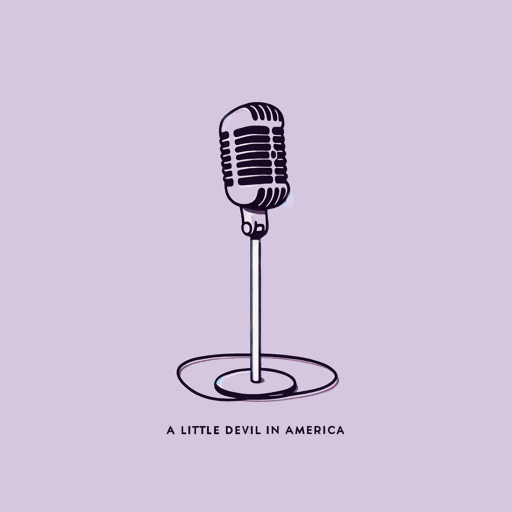57 pages • 1 hour read
Hanif AbdurraqibThey Can't Kill Us Until They Kill Us
Nonfiction | Essay Collection | Adult | Published in 2017A modern alternative to SparkNotes and CliffsNotes, SuperSummary offers high-quality Study Guides with detailed chapter summaries and analysis of major themes, characters, and more.
Summary and Study Guide
Overview
Hanif Abdurraqib’s They Can’t Kill Us Until They Kill Us, published in 2017, is a collection of essays that explores the intersection of music, grief, and joy in the midst of the Black Lives Matter movement. Abdurraqib is a poet, essayist, and cultural critic, and They Can’t Kill Us Until They Kill Us is his debut essay collection. This collection transformed the music and cultural criticism genre; the MacArthur Foundation credits Abdurraqib with creating “a new form of cultural criticism, one that is informed by lived experience and offers incisive social and artistic critiques” (“Hanif Abdurraqib.” MacArthur Foundation). The essays transcend the musical criticism genre, becoming a narrative that explores how music has saved Abdurraqib throughout his life and allowed him to make sense of the trauma and violence directed toward the US’s Black population.
This study guide refers to the 2023 expanded paperback edition of the collection.
Content Warning: This guide obscures the author’s use of the n-word. The essays in this collection explore self-harm, suicide, police killings and beatings of Black people, rape, lynching, anti-Blackness racism, anti-Muslim bigotry, racist stereotypes, and anti-LGBTQIA+ discrimination.
Summary
The collection is broken up into six sections, each of which begins with an excerpt from a six-part essay describing Marvin Gaye’s national anthem performance at the 1983 NBA All-Star Game. These excerpts set the tone for each section, serving as epigraphs and introductions to the section’s themes.
The first six essays focus on Abdurraqib’s role as an observer and audience member at various live music events. “Chance the Rapper’s Golden Year” explores the theme of Enthusiasm, Joy, and Community in Music. “A Night In Bruce Springsteen’s America” questions the value of hard work and the promise of longevity. “Carly Rae Jepsen Loves You Back” is an ode to loving what—and whom—one loves unashamedly and enthusiastically. “The Night Prince Walked On Water” uses Prince’s 2007 Super Bowl performance to represent his ability to build an inclusive community with ease and grace. “ScHoolboy Q Wants White People to Say the Word” considers the harm white people can cause by using the n-word. “The Weeknd and the Future of Loveless Sex” focuses on heartbreak and the ending of relationships, juxtaposing the Public Versus Private Grief of breakups.
The second section introduces Abdurraqib as a character, exploring the various ways music shaped his identity and helped him create a community. “I Wasn’t Brought Here, I Was Born: Surviving Punk Long Enough to Find Afropunk” conveys the importance of finding an inclusive community, especially in the face of racism and discrimination. “Under Half-Lit Fluorescents: The Wonder Years and the Great Suburban Narrative” and “All Our Friends Are Famous” explore the magic and loyalty of childhood and teenage friendships. “The Return of the Loneliest Boys In Town” and “Death Becomes You: My Chemical Romance and Ten Years of the Black Parade” serve as retrospective critiques of the bands My Chemical Romance and Cute Is What We Aim For. The most personal essays come in the trio “Brief Notes on Staying // No One Is Making Their Best Work When They Want to Die,” “Searching for a New Kind of Optimism,” and “Defiance, Ohio Is the Name of a Band.” These essays explore Abdurraqib’s experience as an artist and Midwesterner trying to make sense of his continuous grief at the murder of Black men and the pain and exhaustion that comes with fighting for personal safety.
The third section consists of just one essay: “Fall Out Boy Forever.” Abdurraqib memorializes his deceased friend Tyler, using various Fall Out Boy performances to bolster his elegy.
The fourth section focuses primarily on Rewriting Narratives and Incorrect Perceptions and Performativity and Fitting In. “It Rained in Ohio on the Night Allen Iverson Hit Michael Jordan with a Crossover” and “Black Life on Film” explore the various stereotypes Black men are boxed into by society and the media. “Ric Flair, Best Rapper Alive” examines the intersection of survival, identity, and persona creation. “There Is the Picture of Michael Jackson Kissing Whitney Houston on the Cheek” and “Burning That Which Will Not Save You: Wipe Me Down and the Ballad of Baton Rouge” reconsider historical tragedies and survival strategies. “Tell ’Em All to Come and Get Me” is a celebration of the Black community’s perseverance in the face of repeated injustices. “Rumours and the Currency of Heartbreak” explores the drama that occurs when private heartbreak becomes public and how that can create incorrect public narratives.
The fifth section is the longest, consisting of 17 essays in which Abdurraqib explores the grief, rage, and fear he experiences as a Black Muslim man in America. “Fear in Two Winters” and “On Paris” consider the experience of being Muslim amid the 9/11 and the 2015 Paris Terrorist Attacks. “Nina Simone Was Very Black,” “The White Rapper Joke,” and “Johnny Cash Never Shot a Man in Reno. Or, the Migos: Nice Kids from the Suburbs” focus on the personas artists and the media create and how the artists profit (or don’t) from these personas. “Blood Summer, in Three Parts.” and “Serena Williams and the Policing of Imagined Arrogance” focus on the violence and hatred Black women in America face. “My First Police Stop” and “They Will Speak Loudest of You After You’ve Gone” explore white people’s anti-Black racism in all of its explicit and subtle forms. “In the Summer of 1997, Everyone Took to the Streets in Shiny Suits” is an elegy for Abdurraqib’s mother and her unexpected death. “February 26, 2012,” “August 9, 2014,” and “November 22, 2014” serve as snapshots of specific national and personal moments that caused Abdurraqib to examine what it means to be a Black man in America. “On Kindness” returns to the theme of rewriting narratives and to the danger of allowing stereotypes to inform decisions. “The Obama White House, a Brief Home for Rappers” operates as an elegy for the Obama administration and its celebration of Black artists previously unwelcome in Washington. “On Future and Working Through What Hurts” examines how private grief can be commercialized for public success. “Surviving on Small Joys” praises the innocence and optimism of childhood and communicates Abdurraqib’s continued hope for the future.
The sixth section consists of three “bonus tracks” new to the 2023 edition. Abdurraqib explores the value of crushes—both romantic and platonic—in “On Summer Crushing.” He returns to his love and enthusiasm for Carly Rae Jepsen in “Carly Rae Jepsen and the Kingdom of Desire.” Finally, he explores the possibilities of love and chance in “On Seatbelts and Sunsets.”
Related Titles
By Hanif Abdurraqib



